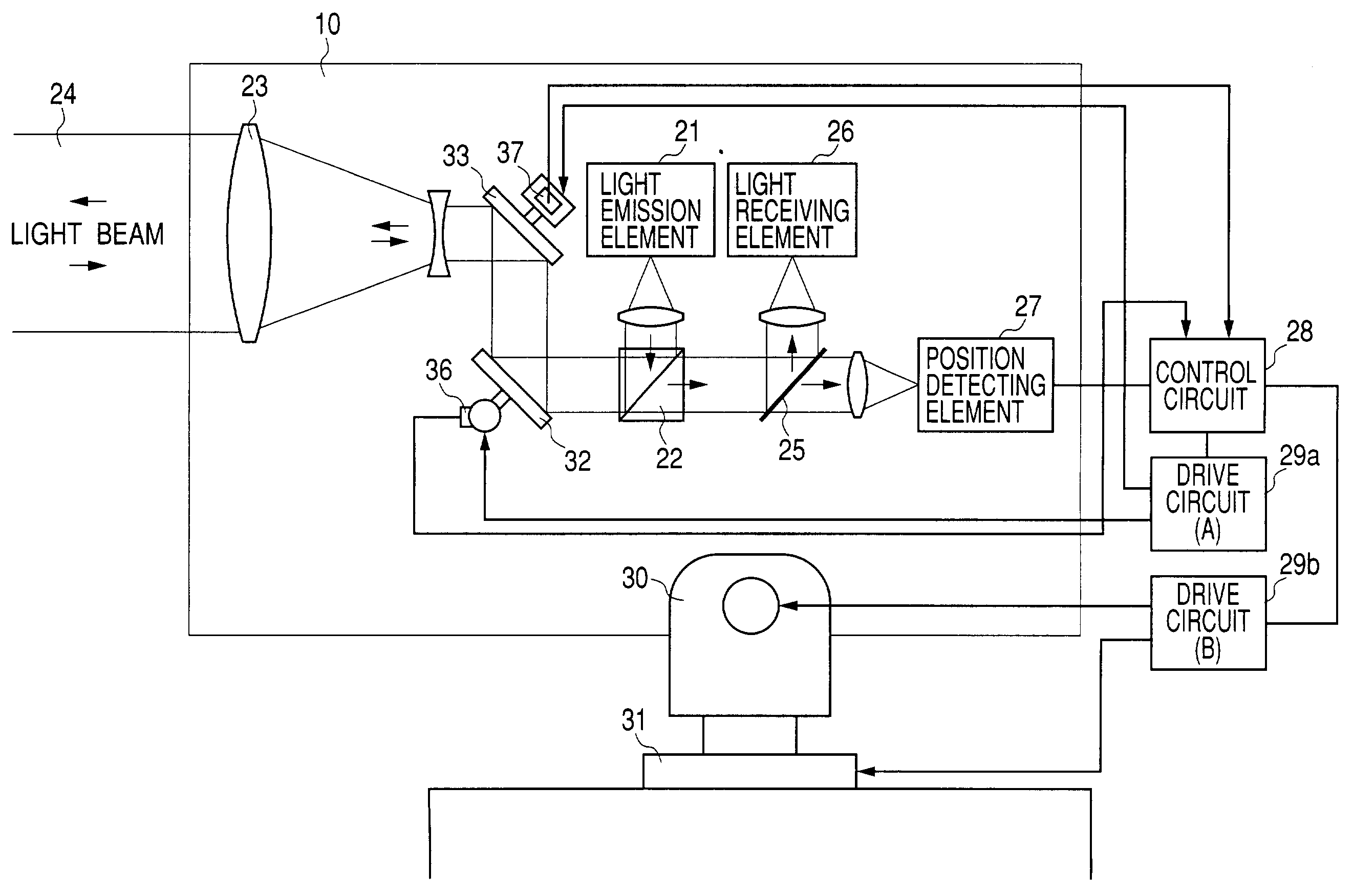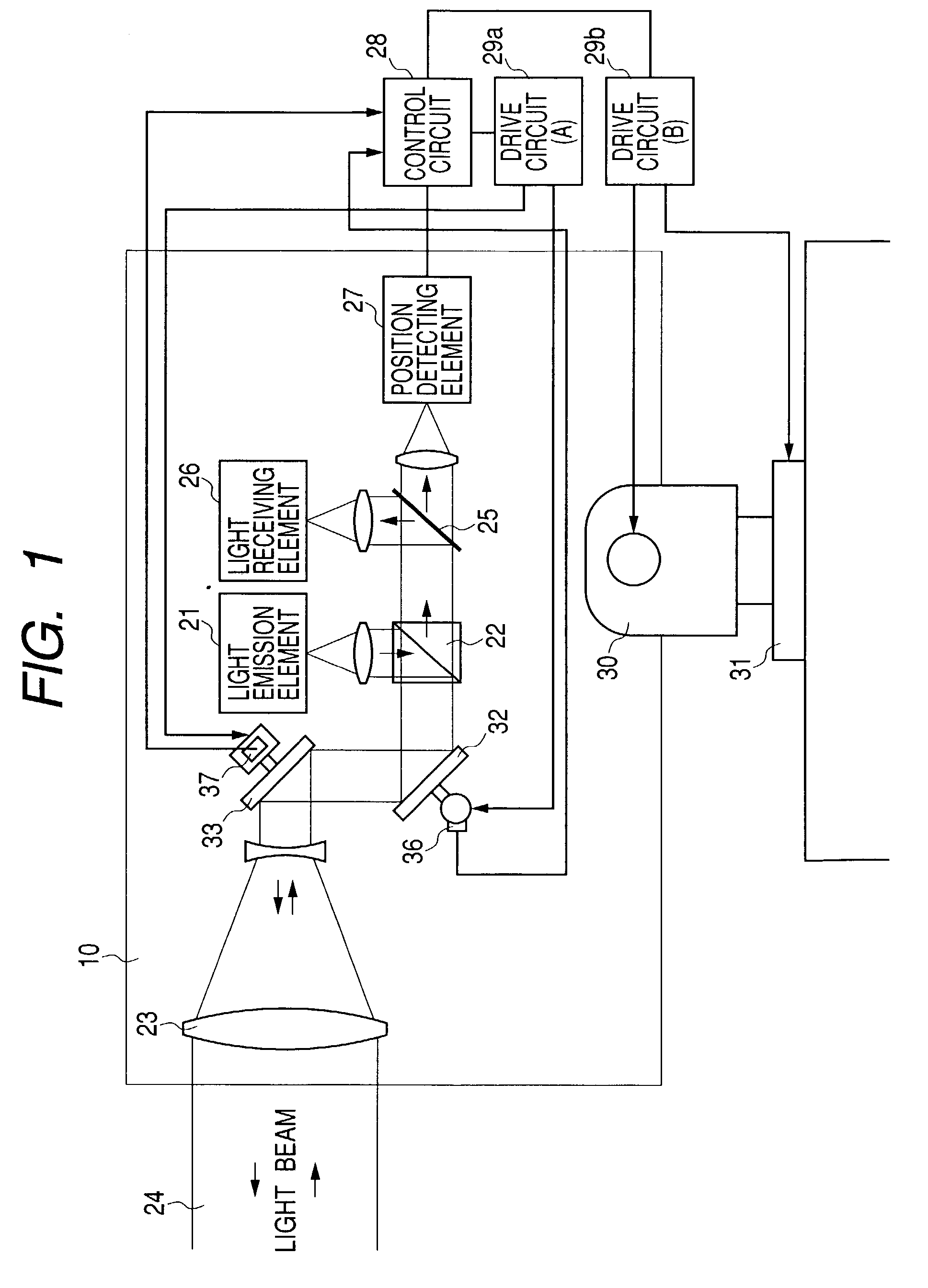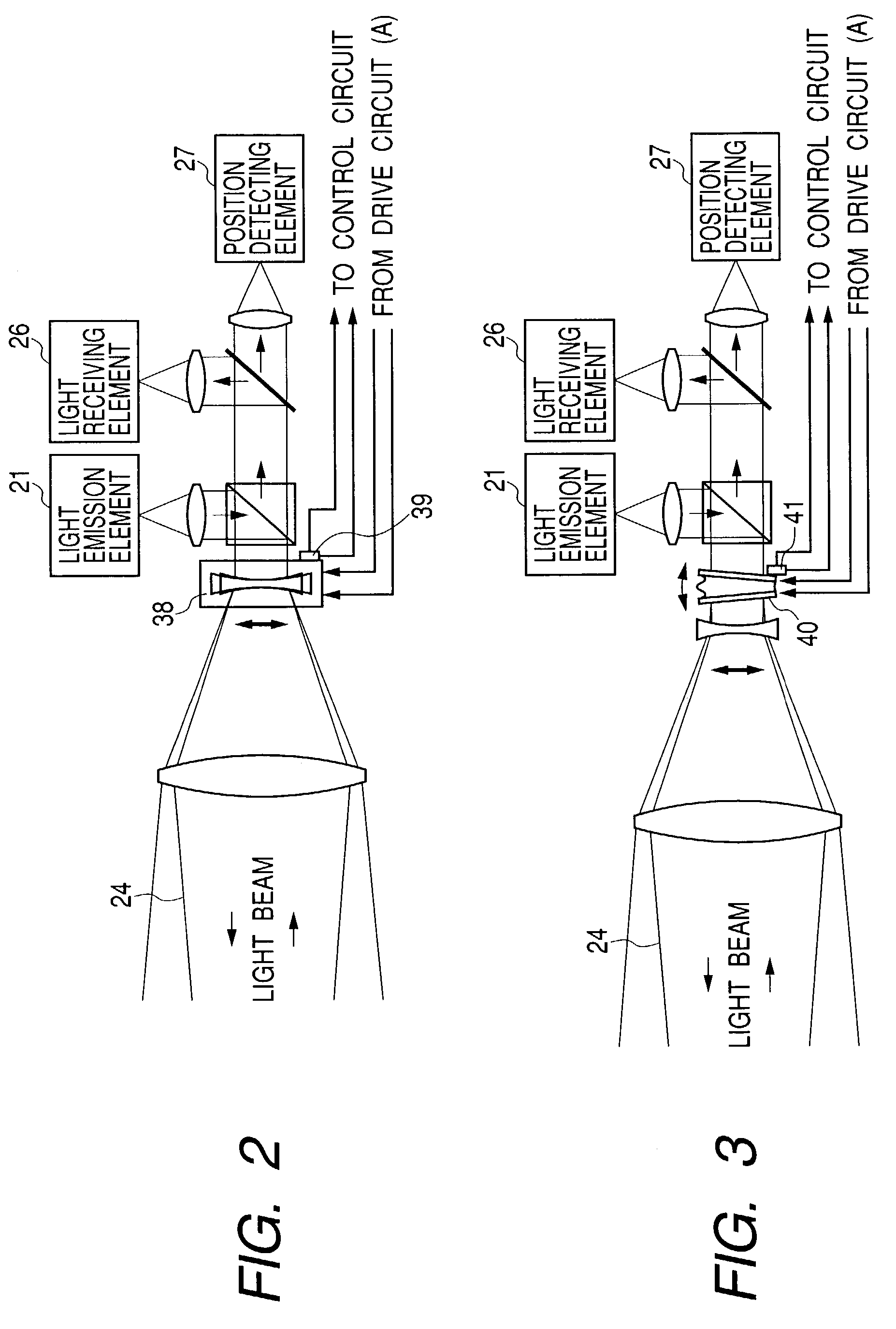Spatial optical communication apparatus
a technology of optical communication and satellite, applied in the direction of optical elements, satellite communication transmission, instruments, etc., can solve the problems of difficult to achieve stable communication, light beams are liable to deviate from a partner apparatus, and each apparatus, however, has its advantages and disadvantages
- Summary
- Abstract
- Description
- Claims
- Application Information
AI Technical Summary
Benefits of technology
Problems solved by technology
Method used
Image
Examples
first embodiment
[0030](First Embodiment)
[0031]FIG. 1 shows a spatial optical transmission apparatus having the optical-axis deviation correcting function according to the present invention.
[0032]In FIG. 1, light from a light emission element 21 is reflected toward a light transmission and reception lens 23 by a polarization beam splitter 22, similar to the conventional apparatuses as illustrated in FIG. 4 and FIG. 6. After its direction is correctly adjusted by light deflection mirrors 32 and 33, the reflected light is transmitted toward the direction of a partner apparatus as a substantially parallel light beam 24 with a small divergence.
[0033]Light from the partner apparatus is reversely guided along the same optical axis as that of the transmission optical signal from the subject apparatus, and the light thus passes through the light transmission and reception lens 23, is reflected by the light deflection mirrors 32 and 33, and enters the polarization beam splitter 22. This reception light from ...
second embodiment
[0039](Second Embodiment)
[0040]A second embodiment of FIG. 2 uses a so-called lens shift optical system 38 as a means for deflecting light at high rate in the optical system in place of the light deflection mirrors 32 and 33. A lens of the lens shift optical system 38 is moved perpendicularly to the optical axis. Movement of the lens in the sheet of FIG. 2 is indicated in FIG. 2, but actually the lens can be freely moved in a two-dimensional manner along directions parallel and perpendicular to the sheet of FIG. 2. The light beam 24 is deflected in accordance with the shift amount of the lens. A driving means for the lens shift can be an actuator using a voice coil, a linear motor, or the like.
[0041]The second embodiment further includes a lens position sensor 39 for detecting shift amounts of the lens in the parallel and perpendicular directions. The lens position sensor 39 supplies position information to the control circuit 28, similar to the first embodiment, to control the driv...
third embodiment
[0042](Third Embodiment)
[0043]A third embodiment of FIG. 3 uses a variable vertex-angle prism 40 as a means for deflecting light at high rate in the optical system in place of the light deflection mirrors 32 and 33. In the variable vertex-angle prism 40, transparent liquid is provided between two transparent plates, and the magnitude of the lens effect of light deflection and the like is varied by changing the angle between the two transparent plates. Vertex-angle drive in the sheet of FIG. 3 is indicated in FIG. 3, but actually the vertex angle can be freely changed in a two-dimensional manner along directions parallel and perpendicular to the sheet of FIG. 3. Optical angle of refraction is changed, and the light beam 24 is hence deflected in accordance with the amount of change of the vertex angle. A driving means for varying the vertex angle can be an actuator using a voice coil, a linear motor, or the like, similar to the second embodiment.
[0044]The third embodiment further incl...
PUM
 Login to View More
Login to View More Abstract
Description
Claims
Application Information
 Login to View More
Login to View More - R&D
- Intellectual Property
- Life Sciences
- Materials
- Tech Scout
- Unparalleled Data Quality
- Higher Quality Content
- 60% Fewer Hallucinations
Browse by: Latest US Patents, China's latest patents, Technical Efficacy Thesaurus, Application Domain, Technology Topic, Popular Technical Reports.
© 2025 PatSnap. All rights reserved.Legal|Privacy policy|Modern Slavery Act Transparency Statement|Sitemap|About US| Contact US: help@patsnap.com



